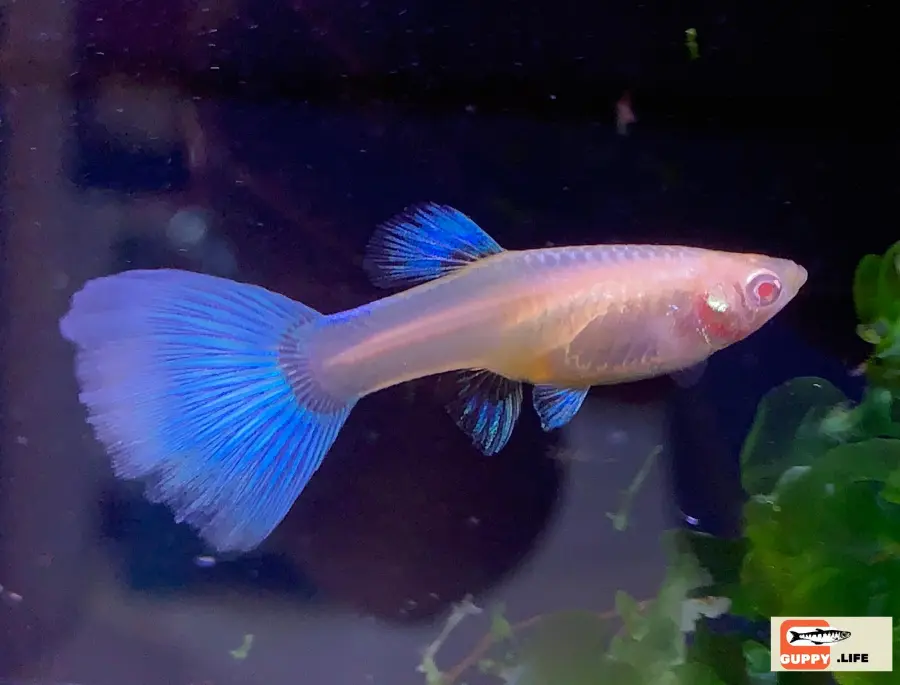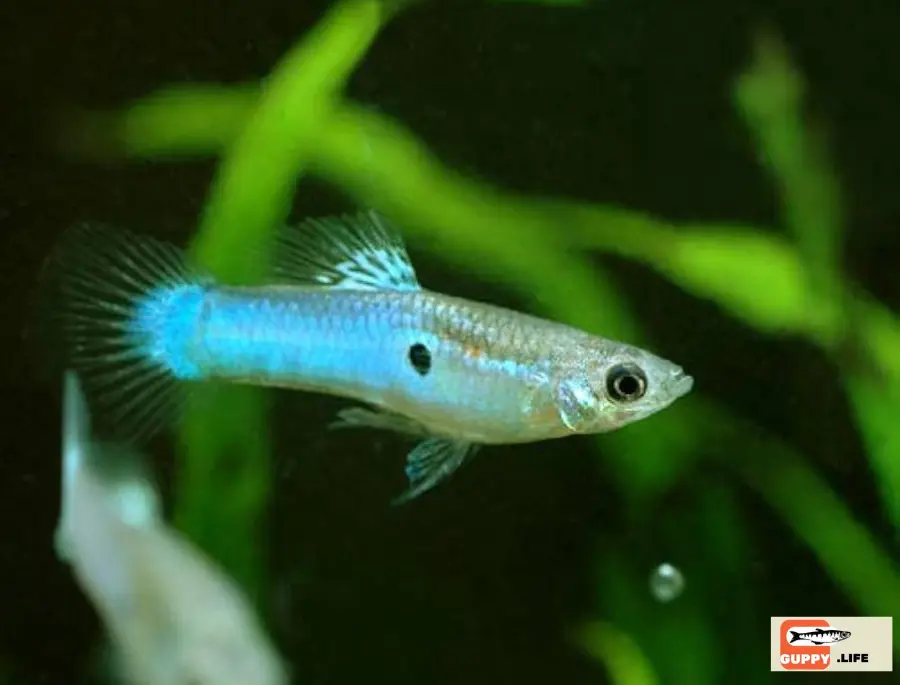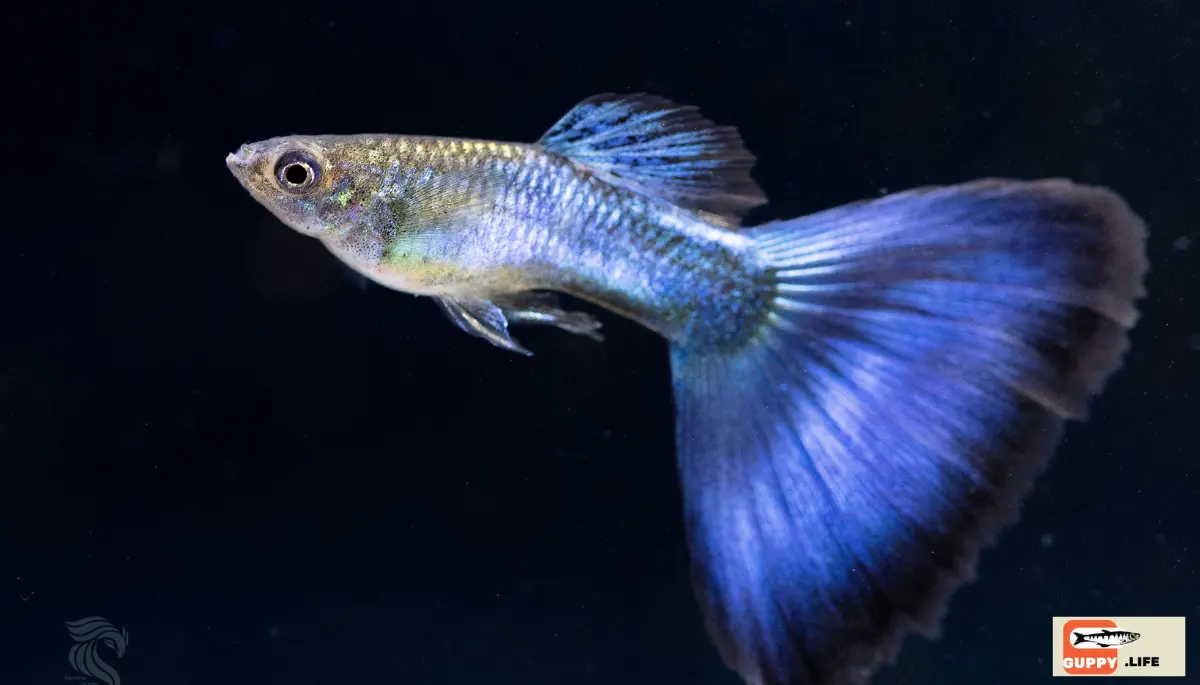Welcome to the vibrant world of Japan Blue Guppy! If you’re a passionate aquarium enthusiast or a newcomer to the world of fishkeeping, you’re in for a treat. Japan blue guppies are captivating freshwater fish that have gained popularity for their stunning colors and unique characteristics.
In this blog post, we’ll dive into the fascinating world of Japanese Blue Guppies, exploring their origin, distinctive features, and tips on how to care for these mesmerizing aquatic companions. Whether you’re a seasoned aquarist or just starting, join us on a journey to discover the beauty and charm of Japanese blue guppies.
Lifespan Of Japan Blue Guppy
The lifespan of Japanese blue guppies is influenced by various factors, but under proper care, these vibrant fish can live for an average of two to three years. Providing a suitable environment is crucial for their well-being. A well-maintained aquarium with clean water, appropriate filtration, and a balanced diet can significantly contribute to its longevity.
Cost Of Japan Blue Guppy

The cost of Japanese blue guppies can vary depending on several factors, including their quality, coloration, and breeding lineage. On average, you can expect to pay anywhere from $5 to $20 per fish. However, high-quality, selectively bred specimens with exceptional color patterns or unique traits may command higher prices, ranging from $20 to $50 or more.
The availability of Japan Blue Guppies in your local area or from online sellers can also influence their cost. Rare or specially bred varieties might be more expensive due to their scarcity and the efforts involved in breeding and maintaining their distinct characteristics.
Choosing the Right Fish Food For Japan Blue Guppy
Choosing the right fish food is crucial for the health and vibrancy of your Japan Blue Guppies. These colorful fish thrive on a balanced and nutritious diet to maintain their stunning colors and overall well-being. When selecting fish food for the Blue Japan Guppy, consider both the type of food and its nutritional content.
Opt for high-quality flakes or pellets specifically formulated for tropical freshwater fish. Look for options that contain a mix of proteins, fats, vitamins, and minerals to meet the dietary needs of your guppies. Specialized guppy food that enhances coloration is also available and can help bring out the vibrant blues and other hues in their scales.
Feeding frequency is important. Offer small, manageable portions two to three times a day, making sure to feed only what the fish can consume in a few minutes. Overfeeding can lead to water quality issues and negatively impact the health of your Guppy Japan Blue.
Supplementing their diet with occasional treats such as freeze-dried or live foods like brine shrimp or daphnia can provide variety and additional nutrients. It’s essential to strike a balance and avoid over-reliance on a single type of food.
Common Health Issues And Treatment Of Japan Blue Guppy
Ensuring the well-being of your Japan Blue Guppies involves being aware of common health issues and knowing how to address them promptly. One prevalent concern is the presence of parasites, which can affect their fins, skin, or internal organs. If you notice any unusual behavior, such as lethargy or changes in swimming patterns, it’s essential to observe your guppies closely and, if necessary, seek advice from a vet specializing in aquatic species.
Another common issue is fungal infections, often manifesting as white or cotton-like growth on the fish’s body. Maintaining good water quality, regular tank cleaning, and prompt treatment with a suitable antifungal medication can help combat these infections.
Overcrowded or poorly maintained aquariums can lead to stress and compromised immune systems in Japanese blue guppies, making them susceptible to diseases. Regular water changes, proper filtration, and monitoring water parameters like pH and temperature are key preventive measures.
In the case of injuries, such as torn fins or wounds, isolating the affected fish and providing a stress-free environment aids recovery. Adding aquarium salt or using specific medications can assist in promoting healing.
Observing your guppies for any signs of illness, such as changes in appetite, abnormal swimming, or discoloration, is crucial. Early detection allows for timely intervention, increasing the chances of successful treatment. Regular health checks, a clean environment, and a well-balanced diet contribute to the overall resilience of Japanese blue guppies, minimizing the risk of common health issues.
Nutritional Requirements For Japan Blue Guppy

Meeting the nutritional requirements of Japanese blue guppies is essential for their overall health and vibrant appearance. These colorful fish benefit from a well-balanced diet that includes high-quality flake or pellet food specifically formulated for tropical freshwater fish. Look for options that provide a mix of proteins, fats, vitamins, and minerals to support their growth and vitality.
Japan Blue Guppies have a particular affinity for foods rich in carotenoids, which enhance their distinctive blue and other colorations. Choosing a specialized guppy food that promotes color development can contribute to the intensity and brilliance of their hues.
Japan Blue Guppy Feeding
Feeding Japanese blue guppies is a simple yet crucial aspect of their care routine. These vibrant fish thrive on a diet that meets their nutritional needs, ensuring they maintain their stunning colors and overall health. High-quality flake or pellet food designed for tropical freshwater fish serves as a staple in their diet. Look for options that contain a balanced mix of proteins, fats, vitamins, and minerals.
It’s recommended to feed Japan Blue Guppies small, manageable portions two to three times a day. This helps mimic their natural feeding behavior and prevent overfeeding, which can lead to water quality issues. Offering only what the fish can consume within a few minutes helps maintain a clean and healthy aquarium environment.
Supplementing their diet with occasional treats is a great way to provide variety and additional nutrients. Freeze-dried or live foods like brine shrimp, daphnia, or bloodworms can be offered as treats, enriching their diet and stimulating natural behaviors.
Best Water Temperature For Japan Blue Guppy
Maintaining the right water temperature is crucial for the well-being of Japanese blue guppies. These tropical freshwater fish thrive in temperatures ranging from 72°F to 82°F (22°C to 28°C). It’s essential to provide a stable and suitable temperature within this range to ensure their optimal health and comfort.
A reliable aquarium heater can help maintain a consistent temperature, especially in regions where room temperatures fluctuate. Sudden temperature changes or extremes can stress the Japanese blue Guppies, making them more susceptible to illnesses.
Best pH Levels For Japan Blue Guppy
Maintaining the right pH levels is crucial for the health and well-being of Japanese blue Guppies. These tropical freshwater fish thrive in slightly acidic to neutral conditions. The ideal pH range for Guppy Japan Blue is typically between 6.8 and 7.5.
Regular monitoring of the aquarium’s pH using a reliable test kit is essential to ensure the levels stay within the recommended range. pH levels that are too high or too low can stress the guppies and may negatively impact their overall health.
If the pH levels are too high, indicating alkaline conditions, you can consider using pH-lowering products or natural methods like adding driftwood or peat moss to the aquarium. Conversely, if the pH is too low, indicating acidic conditions, you may use pH-raising products or add crushed coral or limestone to the tank.
Breeding Japan Blue Guppy and Other Fish That Get Along

Breeding Japan Blue Guppies can be a rewarding experience, and selecting tankmates who get along well is crucial for a harmonious aquarium. Guppies, in general, are known for their peaceful nature, making them compatible with various other fish species. Good tankmates for breeding Blue Japan Guppy include other community fish like Neon Tetras, Corydoras Catfish, and Molly Fish.
When setting up a breeding tank, provide plenty of hiding spots and dense vegetation to offer security for the fry (baby fish) once they are born. Guppies are prolific breeders, and a separate breeding tank helps protect the fry from potential predation by adult fish.
It’s important to note that some fish, even within the same species, may exhibit aggressive behavior, especially during breeding. Keep an eye on the interactions between fish and be prepared to separate any aggressive individuals to maintain a peaceful environment.
Maintaining proper water conditions, including the right temperature and pH levels, is essential for successful breeding. Regularly monitor water parameters and perform water changes as needed to create an optimal environment for both breeding and raising fry.
With careful planning and consideration of tankmate compatibility, breeding Guppy Japan Blue alongside other peaceful community fish can result in a vibrant and thriving aquarium full of color and life.
Related Posts:
>>> Blue Guppy: A Splash of Elegance in Your Aquarium
>>> Blue Koi Guppy Cost, Health Problems and Lifespan
>>> Blue Grass Guppy Lifespan, Cost, Health Issues And Breeding
>>> Blue Tarzan Guppy Cost, breeding, Health Issues, And Lifespan
>>> How Much Is A Blue Moscow Guppy? Health And Food
Problems with Taking Care Of Japan Blue Guppy
While Japanese blue Guppies are generally hardy and easy to care for, there can be some challenges that aquarists may encounter. One common issue is maintaining water quality. Guppies are sensitive to changes in water parameters, so regular water testing and proper filtration are crucial. Overcrowding and inadequate tank maintenance can lead to poor water quality, affecting the health of the Blue Japan Guppy.
Another challenge is a potential disease. Guppies, like any fish, can be susceptible to illnesses such as fin rot, ich, or fungal infections. Observing changes in behavior, appearance, or appetite and addressing them promptly is vital. Quarantining new fish before introducing them to the main tank can help prevent the spread of diseases.
Breeding can present challenges, especially if you’re not prepared for a rapid increase in population. Having a plan for managing fry, providing hiding spots, and separating pregnant females in a breeding tank can help control the population and ensure the well-being of both adults and fry.
Selecting suitable tankmates is crucial. While guppies are generally peaceful, some fish may exhibit aggressive behavior or have different care requirements. Compatibility and adequate space for each species should be considered to avoid conflicts.
Female Japan Blue Guppy
Female Japan Blue Guppies are equally captivating and play a significant role in the vibrancy of your aquarium. Identifying female guppies is relatively straightforward; they typically have a larger and rounder abdomen compared to males. This is especially noticeable when they are pregnant, as female guppies are known for their prolific breeding.
Maintaining a female-friendly environment is important for their well-being. Providing ample hiding spots, live plants, or decorations in the aquarium gives them places to seek refuge and can be beneficial during the breeding process. Female guppies can store sperm for multiple pregnancies, so even without a male present, they may continue to give birth to new fry.
Male Japan Blue Guppy
Male Japanese blue Guppies are strikingly beautiful with their vibrant colors and distinctive fins. Identifying male guppies is usually straightforward; they have a more streamlined body and display elaborate, colorful tails. The Japan Blue variety is particularly captivating, showcasing stunning blue hues that add a unique charm to the aquarium.
Maintaining the well-being of male guppies involves creating a suitable environment. Ensuring a clean tank, appropriate water conditions, and providing places for them to explore and swim freely contribute to their overall happiness. Male guppies are generally peaceful, but it’s essential to consider compatibility with other tankmates to avoid potential conflicts.
Conclusion
In conclusion, Japanese blue Guppies are fascinating and colorful additions to your aquarium. Taking care of them involves providing a clean and comfortable environment, suitable food, and keeping an eye on their well-being. Whether you have male or female guppies, creating a space with hiding spots, proper nutrition, and compatible tankmates ensures a happy and thriving community.
Breeding guppies can be an exciting experience, but it’s essential to be prepared for their prolific nature. Overall, with proper care and attention, these vibrant fish can bring joy and beauty to your aquatic world, making your aquarium a lively and delightful place to enjoy.
FAQS
Q: What is the ideal water temperature for Japanese blue Guppies?
A: Japan Blue Guppies thrive in a temperature range of 72°F to 82°F (22°C to 28°C).
Q: What is the lifespan of Japanese blue Guppies?
On average, Japanese blue Guppies can live for about two to three years, but proper care and a suitable environment can contribute to their longevity.
Q: Can male and female guppies be kept together?
A: Yes, male and female guppies can coexist in the same tank. However, be prepared for potential breeding, as guppies are prolific reproducers.
Q: How can I prevent diseases in Japanese blue guppies?
A: Maintaining good water quality, providing a balanced diet, and regularly monitoring the health of your guppies can help prevent common diseases. Quarantining new fish before introducing them to the main tank is also a good practice.
Q: Are Japan Blue Guppies suitable for beginners?
A: Yes, Blue Japan Guppy is generally considered suitable for beginners due to its hardy nature and ease of care.
Q: What should I feed my Japanese blue Guppies?
Feed them high-quality flake or pellet food designed for tropical freshwater fish, supplemented with occasional treats like live or freeze-dried foods for added variety.
Q: Can I keep Japanese blue Guppies with other fish?
A: Yes, Japanese blue Guppies are peaceful and can be kept with other compatible community fish. However, monitor their interactions to prevent aggression.


